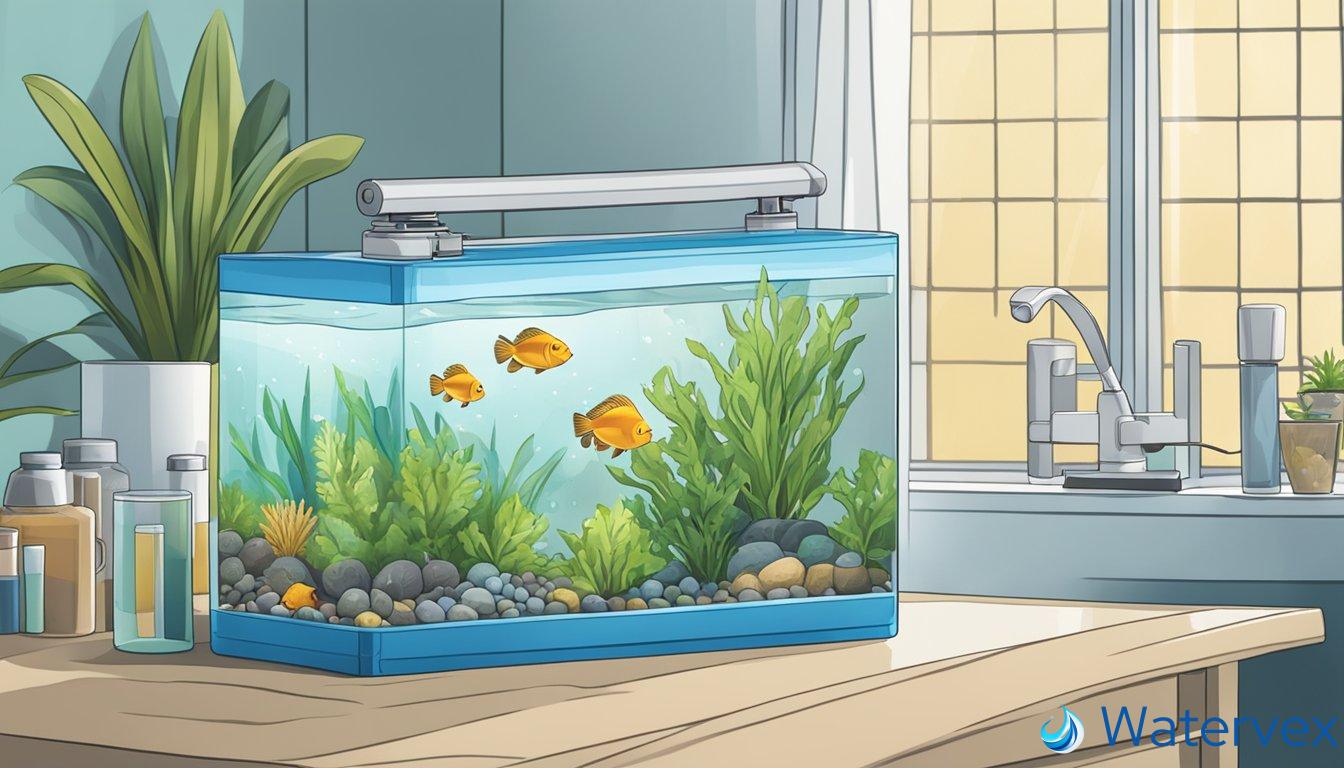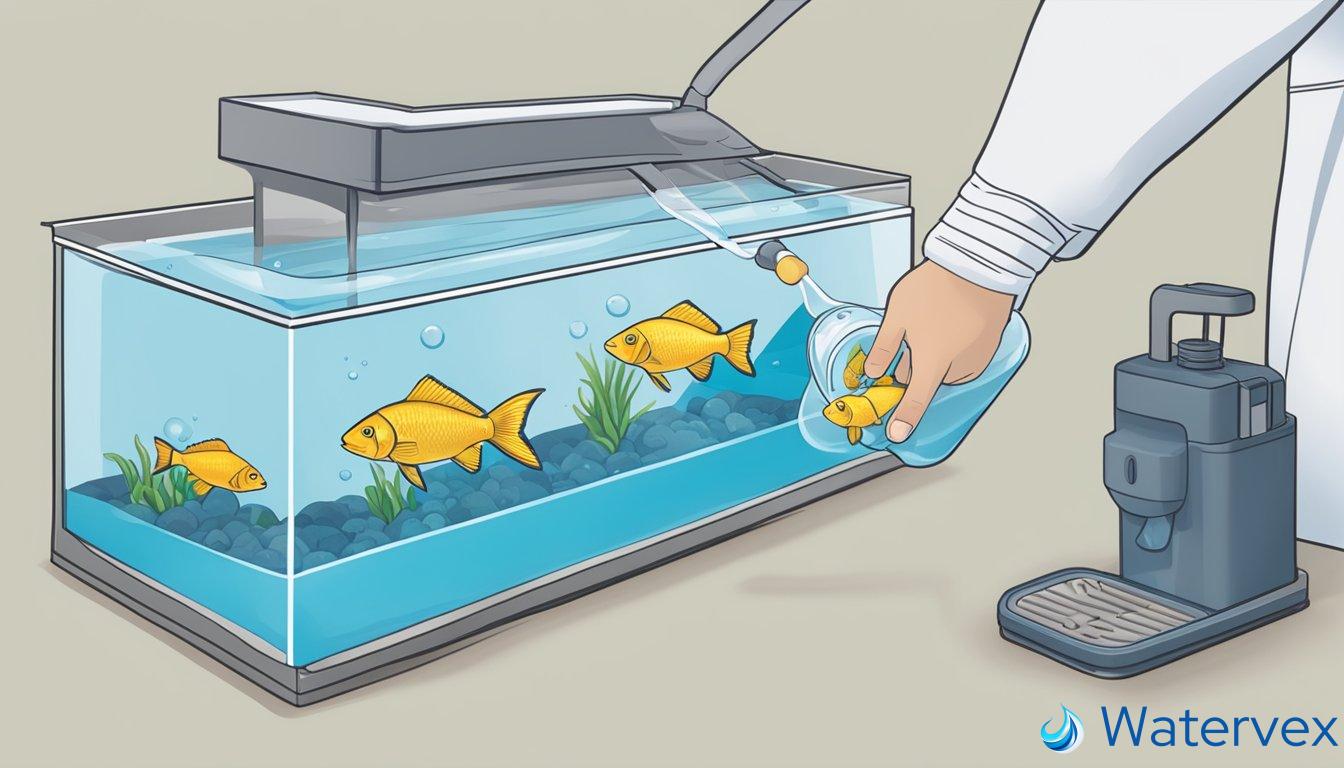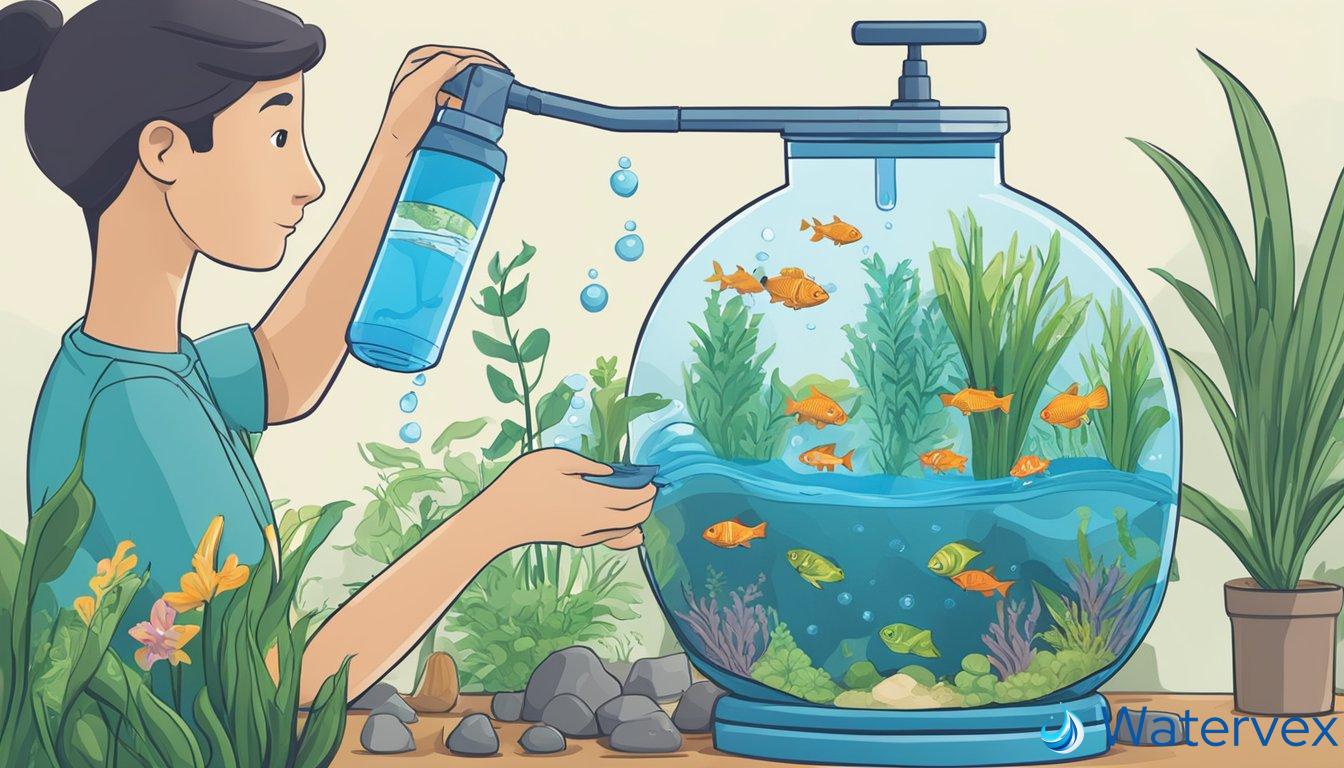Maintaining a healthy aquarium environment is crucial for the well-being of your aquatic life. Fluval water conditioner is specifically formulated to treat tap water, making it safe for your freshwater and saltwater fish. When you introduce tap water into your aquarium, it’s essential to neutralize the chlorine, chloramine, and other harmful chemicals that are commonly found in municipal water supplies. Using a water conditioner like Fluval ensures your aquatic pets thrive in a safe environment.

Understanding the correct usage of Fluval water conditioner is vital. The dosage depends on the volume of water in your tank as well as the specific needs of your aquarium. Safety is another key aspect; it’s important to follow recommended guidelines to avoid any negative impact on your fish. Remember, each aquarium is unique, and factors like the number of fish, the presence of live plants, and water parameters can affect how you use the water conditioner. Beyond just using a water conditioner, regular aquarium maintenance, such as monitoring water quality and keeping the tank clean, will contribute to a healthy and vibrant aquatic habitat.
Key Takeaways
- Fluval water conditioner transforms tap water into a safe habitat for both freshwater and saltwater aquariums.
- Correct dosage and adherence to safety instructions are imperative for the well-being of your aquatic life.
- Comprehensive aquarium care goes beyond conditioning water and includes ongoing maintenance and monitoring.
Using Fluval Water Conditioner
Fluval Water Conditioner is essential for creating a safe environment in your aquarium by neutralizing harmful elements found in tap water. Precisely measured dosages will treat your water effectively, ensuring the wellbeing of your aquatic friends.
Preparing the Aquarium
Before you add any conditioner, make sure the aquarium is ready to accept the new water. Remove any waste, and siphon out the water that is due for a change. Test your water’s parameters to determine the levels of impurities such as chlorine and chloramine, ensuring the right amount of conditioner is administered.
Applying the Conditioner
When using the Fluval Water Conditioner, follow the label instructions closely. A bioactive formula within the conditioner specifically targets and neutralizes harmful substances like chlorine, chloramine, and heavy metals. For a standard water change, add the conditioner to new water at the recommended dosage — typically one capful or 5 mL per 10 gallons of tap water.
Aftercare and Maintenance
After the Fluval Water Conditioner has been applied, it will work to create a protective coating on fish fins and reduce fish stress. The biological enhancer included in the formula helps to break down organic waste, but remember to test your water regularly. Maintain the health of your aquarium with routine water changes and conditioner application to continually neutralize harmful elements and keep your aquatic environment balanced.
Dosage and Safety Instructions

Ensuring your aquarium’s environment is safe for your fish involves precise dosing and adherence to safety guidelines. These instructions will guide you through the steps necessary to use Fluval water conditioners effectively, ensuring the well-being of your aquatic friends and the longevity of your aquarium setup.
Determining the Correct Dosage
The correct dosage of Fluval water conditioner is critical to neutralize harmful elements like chloramine and metals found in tap water. To determine the precise amount needed for your aquarium, refer to the specific dosage instructions found in the instruction manual that accompanies your product. For a standard treatment:
- Measure the volume of water in your aquarium.
- Apply the conditioner at the product’s recommended rate, typically outlined as milliliters of conditioner per gallon of water.
For smaller tanks, dosing can be more sensitive; therefore, ensure measurements are as accurate as possible. This often entails using a syringe or dropper for precise application.
Conducting Safe Water Treatment
When treating your aquarium water, follow these safety precautions to avoid any mishaps:
- Before adding the product, turn off aquarium equipment to prevent electrical shock.
- Slowly add the conditioner to the water to provide a gentle blend without stressing your fish.
- After treatment, you may resume operation of the aquarium equipment, such as filters and heaters, following the guidelines in your instruction manual or manual de instrucciones.
Always keep replacement parts on hand, as outlined in the product’s warranty, to ensure your aquarium’s equipment functions correctly after water treatment procedures. Remember, safety first—never attempt to repair electrical aquarium equipment yourself, especially if water is involved. If in doubt, consult the instructiehandleiding in the language of your preference for step-by-step guidance.
Additional Aquarium Care Tips

When caring for your aquarium, it’s key to consider the specific needs of your aquatic pets. For instance, goldfish require a spacious tank with a gentle filter, while cichlids thrive in a well-structured environment with hiding spots, reflective of their natural habitats.
Goldfish: Typically, they produce more waste than other fish, so frequent water testing and changes are crucial. Use a Fluval water conditioner during each water change to remove chlorine, chloramine, and other water contaminants.
Cichlids: They need alkaline water with a higher pH level. Adjust and condition the water accordingly, and ensure the conditioner you use does not lower the pH unintentionally.
Betta and Tropical Freshwater Fish: Both appreciate warm, clean water. Ensure your heater is functioning correctly, and use a water conditioner to neutralize harmful chemicals. Reiterate water tests to maintain optimal conditions for these sensitive species.
Marine Fish: They need saltwater with the right balance of trace elements. When mixing new saltwater, apply a conditioner to remove heavy metals and contaminants that could harm your marine life.
Bottom Feeders: These critters keep the tank clean but don’t forget, they also need clean water. When vacuuming the substrate, treat the new water with a conditioner to safeguard the health of these helpful aquarium janitors.
For other aquatic pets like turtles or axolotls, it’s essential to keep their water well-oxygenated. Turtles can be messy, needing powerful filtration and regular conditioning to keep their water pristine.
Axolotls prefer cooler temperatures and low lighting. After a water change, a conditioner will protect their delicate skin from irritants.
Remember, always dose the water conditioner according to the volume of new water you’re adding to the tank, not the total volume of the aquarium. This prevents overdosing.
For Flex aquariums, equipped with multi-stage filtration, conditioning the water is still imperative after maintenance to ensure a safe environment for all inhabitants.
Regular maintenance, balanced feeding, and attentive use of water conditioners will ensure a healthy, vibrant aquarium community for your family to enjoy.

